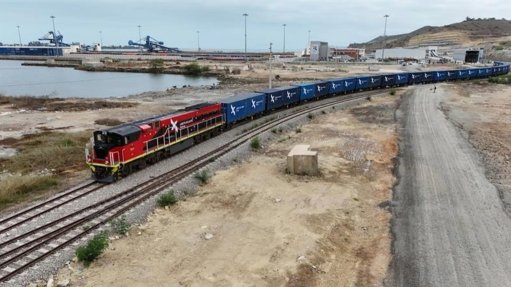Maintenance a critical aspect of efficient hydraulic systems
The maintenance of hydraulic equipment is vital to ensure long-lasting functioning, Garnett Cross Hydraulic Courses president Garnett Cross tells Engineering News.
“A major misconception is that new oil is clean. However, it is not clean until it has been filtered,” he says.
Cross adds that, although companies have filtration systems in place, in some instances, owing to laziness or negligence by operators, the filtering process is skipped and oil is poured as is into the reservoirs.
He says, although there is a serious lack of knowledge, not only in South Africa but also worldwide, there has been an increase in the number of local and international hydraulics operators who are attending the hydraulics courses which his company, Garnett Cross Hydraulics Courses, offers.
“People are realising that hydraulic systems are important and knowing how to operate and maintain them proficiently is worth spending the time and money on attending the courses,” states Cross.
If oil companies use polished stainless steel containers to ensure oil remains clean, this will, in most cases, cost more than the oil is worth. Therefore, end-users have to accept that the oil has to be filtered from the drum into the reservoir by an operator, he explains.
“I have seen, under a microscope, dirt particles of 300 µm in new oil land up in a reservoir and this causes major damage to hydraulic systems. This often causes breakdowns and causes people to believe that hydraulic systems are unreliable,” states Cross.
Further, he says, when ordering hydraulic fluid, it is important to ensure that it complies with the specifications of the hydraulic equipment manufacturer. He advises that, before mixing fluid brand names, users must first check with the hydraulic fluid supplier whether this will adversely affect their hydraulic system.
“Also, do not return any fluid to the reservoir that has leaked out and always store drums upside down on a palette or horizontally on racks, as oil expands at about 0,0007 ℓ for every 1 ºC it rises in temperature. If the drums are vertical and the oil expands, air may be forced out of the bung seals, which will create a partial vacuum in the drum once the oil cools. This may draw in moisture and damage the hydraulic system.”
Cross shared an early draft of his manuscript on hydraulics, entitled ‘What is the single most important aspect of hydraulics that one must remember? Absolute cleanliness of the hydraulic fluid’, with Engineering News.
In the introductory section on reservoirs, Cross outlines the importance of reservoir design in ensuring the optimal functioning of a hydraulic system. The size of a reservoir should, in his view, be at least two to four times the flow rate of the pump, provided that single-acting cylinders are not used. If a single-acting cylinder is used, then one must determine the volume of fluid in the cylinder and add that to the reservoir size.
The material for the manufacturing of a reservoir must be either 304L stainless steel or 306L stainless steel for coastal applications, as coastal weather has a detrimental effect on 304L stainless steel, says Cross.
However, he cautions that mild steel is prone to corrosion, which is why some people prefer to use aluminium.
Corrosion occurs in the reservoir above the oil level and, should condensation occur, at the floor of the vessel as the moisture eventually sinks, says Cross. “There are special paints that may protect the steel, but the surface preparation is critical and expensive. Of course, there is the disadvantage that, in time, the paint may peel,” he warns.
Maintenance must be a constant priority when designing systems, as pumps or electric motors will need to be replaced. Therefore, the replacement must be done as quickly as possible, says Cross.
Mounting Methods and Maintenance
An electrical motor mounted vertically on top of a reservoir, with the pump submerged in the hydraulic fluid, is ideal for the pump, as this enables the pump to operate under flooded suction conditions, which places the top of the fluid supply above the pump inlet, says Cross.
“Unfortunately, as far as maintenance is concerned, having the pump submerged vertically in the oil is not the best approach, as the reservoir needs to be drained of its hydraulic fluid if the temperature of the fluid is too high for the technician to submerge his hands in it. Alternatively, one would have to wait for the fluid to cool,” he adds.
Other maintenance challenges include having to open the top of the reservoir to remove the pump, which allows dust to contaminate the hydraulic fluid. However, Cross points out that contamination may be prevented by rigging a tent over the reservoir before opening the top of the tank to remove the pump.
The conventional method of mounting an electric motor and pump on top of the reservoir also has disadvantages.
“The pump is always working under a partial vacuum, which may cause pump cavitation. This problem is more pronounced in winter, as the hydraulic fluid’s viscosity or resistance increases, making it more difficult for the fluid to enter the pump” he says.
A system that will always maintain a flooded intake has to have the pump and electric motor mounted below the reservoir.
There are a few guidelines that must be followed when the reservoir is higher than the electric motor and pump, states Cross.
“The pump and motor must be at least 1 m below the reservoir to facilitate the easy removal and replacement of the units. A ball valve is also needed on the pump intake line, which may be closed, should a pump replacement be necessary,” he says.
Further, a microswitch must be mounted at the ball valve to trip the electric motor, should a person attempt to close the valve while the pump is running.
A drip tray is also needed below the pump and motor, which must be deep enough to accommodate the volume of hydraulic fluid in the pump intake line below the ball valve and the oil that may run out of the pump during the pump’s removal, adds Cross, noting that the pump and motor can also be mounted on the same level as the base of the reservoir.
He believes that this installation is advantageous, as it allows the pump to have a flooded intake line because, in any flooded suction line, there must be a ball valve in the intake line to enable the removal of the pump without draining the reservoir.
Cross adds that an isolation valve in the intake line of the pump also requires a microswitch. This allows the electric motor driving the pump to be switched off when the ball valve is closed, while the pump is delivering fluid.
“When the pump or electric motor needs to be replaced, a considerable amount of time is also saved by mounting [the units] beside the reservoir at a reasonable distance from the side of the tank,” concludes Cross.
Article Enquiry
Email Article
Save Article
Feedback
To advertise email advertising@creamermedia.co.za or click here
Comments
Press Office
Announcements
What's On
Subscribe to improve your user experience...
Option 1 (equivalent of R125 a month):
Receive a weekly copy of Creamer Media's Engineering News & Mining Weekly magazine
(print copy for those in South Africa and e-magazine for those outside of South Africa)
Receive daily email newsletters
Access to full search results
Access archive of magazine back copies
Access to Projects in Progress
Access to ONE Research Report of your choice in PDF format
Option 2 (equivalent of R375 a month):
All benefits from Option 1
PLUS
Access to Creamer Media's Research Channel Africa for ALL Research Reports, in PDF format, on various industrial and mining sectors
including Electricity; Water; Energy Transition; Hydrogen; Roads, Rail and Ports; Coal; Gold; Platinum; Battery Metals; etc.
Already a subscriber?
Forgotten your password?
Receive weekly copy of Creamer Media's Engineering News & Mining Weekly magazine (print copy for those in South Africa and e-magazine for those outside of South Africa)
➕
Recieve daily email newsletters
➕
Access to full search results
➕
Access archive of magazine back copies
➕
Access to Projects in Progress
➕
Access to ONE Research Report of your choice in PDF format
RESEARCH CHANNEL AFRICA
R4500 (equivalent of R375 a month)
SUBSCRIBEAll benefits from Option 1
➕
Access to Creamer Media's Research Channel Africa for ALL Research Reports on various industrial and mining sectors, in PDF format, including on:
Electricity
➕
Water
➕
Energy Transition
➕
Hydrogen
➕
Roads, Rail and Ports
➕
Coal
➕
Gold
➕
Platinum
➕
Battery Metals
➕
etc.
Receive all benefits from Option 1 or Option 2 delivered to numerous people at your company
➕
Multiple User names and Passwords for simultaneous log-ins
➕
Intranet integration access to all in your organisation
















